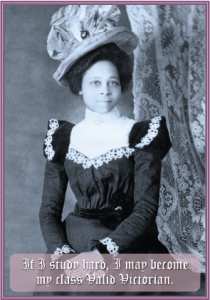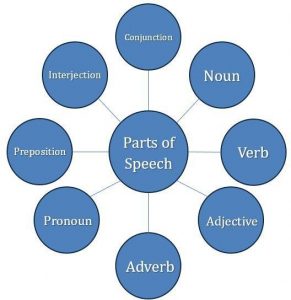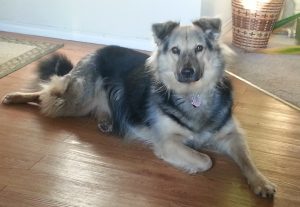61 What is style in academic writing and why is it necessary?

What is sentence “style”?
This kind of style refers to the particular way a sentence is crafted. We will look at not only the function of a sentence and how it works on its own, but also how it works within a paragraph and ultimately within the paper as a whole. Style isn’t necessarily the parts of speech like noun, verb, preposition, but instead, it’s how they are put together to make a clear and powerful statement.
Why do we need to know this?
Knowing how to write and speak well is highly important if you want people to listen to what you have to say. Having a powerful idea is useless if you can’t communicate it well enough for it to be heard. If your audience is having to fight through a haze of mechanical and grammatical errors, they will give up.
The Basics: Terms to Know, Sentence Elements, and Functions
Subject: Usually contains a noun or pronoun and is the topic of the sentence and does an action.
Predicate: This is the action that the subject does.
Independent clause: Contains a subject and predicate and can stand alone as a sentence. ( Ex. I run., He eats., They laugh.)
Dependent (subordinate) clause: Group of words that can’t stand alone as a complete sentence, but is dependent on, or subordinate to, the independent clause. (Ex. Although I run,).
Inverted sentence: When the writer inverts the subject-predicate order and places the action before the subject. (Ex. Never has she felt so beautiful.)
Direct vs. Indirect object: Ex. Sally bakes Joe a cake. The cake receives the action of being baked, which makes it the direct object; however, the cake is baked for Joe, so he is the indirect object.
Prepositional phrase: A word that indicates a relationship from one thing to another. Ex. around, up, under, in, and so on.
What are the different parts of speech and how do they function?

Parts of Speech:
Nouns – Persons, places, things, or ideas; function in a sentence as subject, direct object, indirect object, object complement, predicate nominative, object of a preposition, or appositive
Verbs – Actions or states of being; function in a sentence as either an action verb or a linking verb.
Pronouns – Words that take the place of nouns: function in a sentence as subject, direct object, indirect object, object compliment, predicate nominative, object of a preposition, or appositive
Adjectives – Describe nouns
Adverbs – Describe verbs, adjectives, and even other adverbs
Prepositions – Words that signal prepositional phrases and show relationships between words and phrases; function in a sentence as either an adjective or an adverb
Conjunctions – Words that connect other words, phrases, and clauses; coordinating or subordinate.
Sentence constructions follow these basic patterns:

Subject/ verb: The dog ran.
Subject/ linking verb/ subject compliment: The dog is a German Shepard.
Subject /action verb/ direct object: The dog bit the mailman.
Subject/ action verb/ indirect object/ direct object: The dog brought me a stick.
Subject/ action verb/ direct object/ object compliment: The dog made the mailman angry.
The types of sentences:
Declarative: Makes a statement. The dog is sleeping in the corner.
Interrogative: Asks a question. Where is the dog?
Imperative: Gives a command. Come here, dog.
Exclamative: Expresses surprise. Look at that sweet dog!
*Use the four types of sentences to vary sentence length and style, as well as to:
- Avoid monotony.
- Provide rhythm.
- Create cohesion.
- Ensure clarity.
- Convey voice.
Further Reading:
Walden University’s website page “Grammar: Sentence Structure and Sentence Types” refers to and defines all of the important sentence parts: Sentence Parts Reference Guide
Ways to Vary a Sentence:
Avoid Repeating To-be Verbs:
-
- Writing is what I enjoy. 🡪 I enjoy writing.
- Smoking is bad for your health. 🡪 Smoking can cause bad health effects.
- Strengthens your statement, especially in an argument.
Combine Multiple Simple Sentences:
-
- We write. We edit. 🡪 We write, and we edit.
- He went to the store. He bought apples. 🡪 When he went to the store, he bought apples.
- Provides a smoother feel and shows relationships between ideas.
- Avoids a string of short, choppy sentences.
Use the FANBOYS acronym for remembering coordinating conjunctions: For, And, Nor, But, Or, Yet, and So
- Vary Location of Dependent Clauses and Phrases:
- When he went to the store, he bought apples.
- He bought apples when he went to the store.
- He bought apples when he went to the store, but she bought bananas.
Use subordinating conjunctions for creating dependent clauses: that, which, who, whom, whose, when, where, why, after, although, as, as if, because, since, so that, how, whenever, and so on.
Utilize Transition Words and Phrases:
-
- We write; however, we write and write again.
- Next, we will edit.
- Provides a smooth flow.
- Guides the reader through your thought process.
Conjunctive adverbs include: thus, therefore, thereby, consequently, however, additionally, furthermore, nonetheless, moreover, likewise, and so on.
Use Parallel Structure
Sentence elements that are alike in function should also be alike in construction, or parallel. Below are some examples of parallel elements. Notice the patterns in language:
-
- Ex: thinking, running, singing, seeing (Gerunds: Notice the “-ing” ending verbs)
- Ex: to see, to understand, to speak, to stir (Infinitives: The word “to” and then a verb)
- Ex: on the street, on the table, on the radio, on the mark (Prepositions: The words “on the” and a noun)
- Ex: who you are, what you are doing, why you are here (Clauses: The five Ws and how)
There are five rules on correct parallel usage:
- Coordinating conjunctions: With coordinating conjunctions or FANBOYS.
(FANBOYS: For, and, nor, but, or, yet, and so)
-
- Ex: She likes to look but not to listen.
- Ex: I do not enjoy running or dieting.
- Lists: In a list of three or more items.
-
- Ex: There wasn’t any opportunity to do my taxes, to request an extension, or to explain my situation.
- Ex: The company doesn’t care about who you are, how you got there, or why you have come.
- Comparisons: We often use such as, more, less, better, and worse and link them to words like as and than, but this not always the case.
-
- Ex: Driving to New York can take more time than flying there.
- Ex: How you live your life is just as important as how happy you are.
- Infinitives and being: Use parallel structure with elements joined by a linking verb or verb of being.
-
- Ex: Being Jim’s friend means being a fan of reggae music.
- Ex: To know her is to love her.
- Correlative conjunctions. Correlative conjunction must be used in pairs: Either/or, neither/nor, both/and, and not only/but also.
-
- Ex: We were told to either reduce the staff or find new customers.
- Ex: Angela was neither going to classes nor planning on graduating.
- Ex: I would like to buy both a new house and a new car.
Further Reading:
Here is an excellent guide to sentence style: Purdue Owl Sentence Style Guide
Eliminating wordiness in writing: Eliminating Sentence Wordiness
Attributions
“Haley the Noble Dog” image by Kathy Quesenbury
“Winnie with the Flying Ears” image by Monica Prochnow
